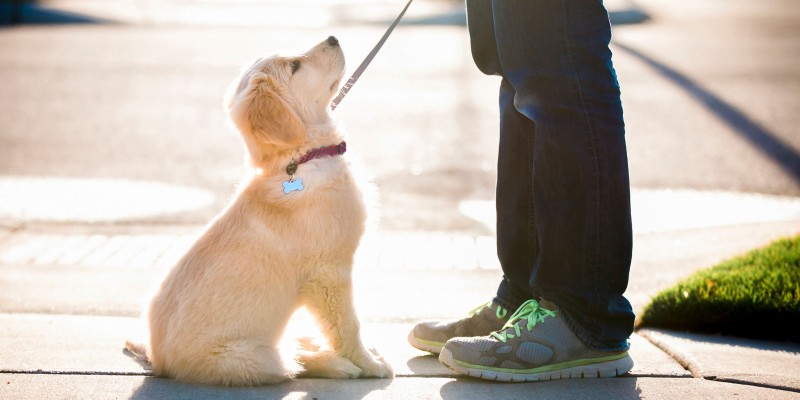The Best Puppy Training Tools You Need to Ensure Success
Leading Young Puppy Training Methods to Guarantee a Well-Behaved Animal
Efficient puppy training is vital for cultivating a well-behaved buddy, and various strategies can substantially affect a pet's growth. As we discover these approaches even more, it becomes clear that the success of puppy training hinges on a mix of strategies that can change your pet's actions in remarkable means.
Positive Support Strategies
Using favorable reinforcement methods is important for reliable puppy training, as it motivates wanted behaviors with incentives instead of penalty. This approach utilizes on the all-natural knowing procedures of pets, reinforcing etiquette by offering tangible and instant incentives, such as treats, appreciation, or play. By associating positive results with details activities, puppies are most likely to duplicate those behaviors in the future.
Incentives must be provided instantly after the preferred habits happens to create a clear link in the young puppy's mind. Furthermore, varying the kinds of benefits can maintain a pup's passion and inspiration throughout the training process.

Uniformity in Training Commands
Keeping uniformity in training commands is important for enhancing the lessons learned with favorable support techniques. Canines prosper on routine and predictability, so using the exact same spoken commands and hand signals for specific habits is crucial. This uniformity assists pups recognize what is expected of them, reducing confusion and irritation for both the trainer and the animal.

Timing also plays a significant role in uniformity. Commands should be supplied without delay during training sessions and followed immediately by favorable reinforcement, such as deals with or praise. This immediate action helps strengthen the association in between the command and the preferred behavior.
Integrating consistency right into training sessions will develop a stable understanding atmosphere, advertising quicker mastery of commands. Inevitably, a well-structured method fosters a strong bond in between the puppy and its proprietor, resulting in an extra well-behaved and loyal pet dog.
Socialization With Various Other Pets
Socializing with various other animals is critical for a young puppy's growth, as it helps them discover ideal behaviors and interaction abilities in diverse social contexts. Very early interactions with different pets can significantly influence a pup's temperament and versatility in numerous situations. When young puppies are revealed to a variety of animals, they come to be more positive and much less frightened, which can prevent prospective behavior concerns later on in life.

Instruct your pup to acknowledge signals from various other family pets, such as signs of playfulness or pain, fostering common respect and understanding. Normal socialization not just enhances your young puppy's social skills however additionally contributes to their total wellness, developing a more unified living environment.
Dog Crate Training Benefits
Acknowledging the numerous advantages of pet crate training can significantly boost both the puppy's and proprietor's experience. Crate training gives a risk-free and safe and secure setting for puppies, guaranteeing they really feel protected when left alone. This feeling of security can substantially lower anxiety and anxiety degrees for both the pet and the owner.
In the original source addition, cages serve as a useful house-training tool. Puppies naturally prevent dirtying their resting area, thus motivating them to hold their bladder up until they are allow outdoors. This reaction can expedite the housebreaking process, promoting great routines beforehand.
Crate training additionally aids in managing a puppy's behavior when unsupervised. By giving a designated area, owners can stop devastating behaviors, such as chewing on furnishings or obtaining right into unsafe substances. Moreover, crates can be beneficial throughout traveling, using a familiar area that can help calm a pup my review here in brand-new atmospheres.
Last but not least, establishing a cage regular urges self-reliance, allowing pups to discover how to be alone without fear. On the whole, dog crate training is an efficient approach for advertising tranquility, technique, and safety, bring about a well-adjusted, well-behaved pet dog.
Leash Training Basics
Leash training is an essential facet of accountable pet dog ownership that makes certain a pleasurable and secure walking experience for both the young puppy and its proprietor. Proper chain training starts early, ideally throughout the pup's socialization period. When out in public., this training assists develop good routines and advertises positive behaviors.
To start, pick a comfy collar or harness that fits your puppy well. Connect a tough chain, ensuring it is not as well long, as this can cause drawing and erratic habits. Begin in a silent setting to minimize diversions and progressively present your puppy to new surroundings.
Use positive support strategies, such as deals with and appreciation, to motivate your young puppy to walk beside you. If your puppy pulls, quit strolling and wait for them to return to your side prior to continuing.
Additionally, incorporate brief training sessions with enjoyable diversions to develop your young puppy's focus. With dedication and perseverance, chain training will result in a well-mannered friend, making strolls pleasurable for both the proprietor and the young puppy.
Conclusion
To conclude, utilizing effective young puppy training techniques is essential for developing a mannerly animal. Favorable support promotes count on and encourages desired behaviors, while consistency in commands help in understanding. Socializing with other pets improves adaptability and social abilities, and crate training supplies a safe setting that supports house-training initiatives. Leash training establishes correct strolling behaviors, adding to delightful outings. Overall, these techniques jointly advertise an unified relationship between young puppies and their proprietors.
As we explore these approaches additionally, it becomes clear that the success of pup training pivots on a mix of techniques that can transform your family pet's habits in exceptional ways.
Using positive reinforcement techniques is essential for effective young puppy training, as it encourages preferred behaviors with incentives instead than punishment.Crate training also assists in managing a puppy's actions when not being watched.Leash training is a fundamental element of responsible animal ownership that guarantees a enjoyable and risk-free walking experience for both the young puppy and its proprietor.In verdict, using effective pup training methods is important for creating a mannerly family pet.